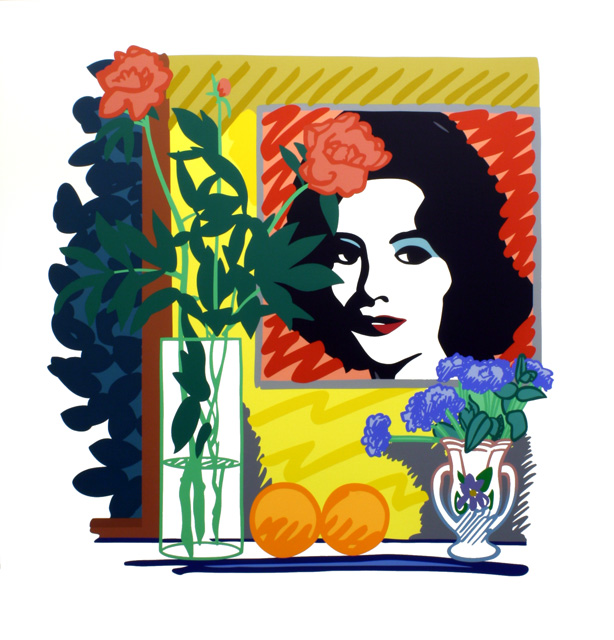TOM WESSELMANN

Tom Wesselmann
Tom Wesselmann (February 23, 1931, Cincinnati – December 17, 2004) was an American artist associated with the Pop art movement who worked in painting, collage and sculpture.
From 1949 to 1951 he attended college in Ohio; first at Hiram College, and then transferred to major in Psychology at the University Of Cincinnati. He was drafted into the US Army in 1952, but spent his service years stateside. During that time he made his first cartoons, and became interested in pursuing a career in cartooning. After his discharge he completed his psychology degree in 1954, whereupon he began to study drawing at the Art Academy of Cincinnati. He achieved some initial success when he sold his first cartoon strips to the magazines 1000 Jokes and True.
Cooper Union accepted him in 1956, and he continued his studies in New York. During a visit to the MoMA he was inspired by the Robert Motherwell painting Elegy to the Spanish Republic: “The first aesthetic experience… He felt a sensation of high visceral excitement in his stomach, and it seemed as though his eyes and stomach were directly connected”.
Wesselmann also admired the work of Willem de Kooning, but he soon rejected action painting: “He realized he had to find his own passion he felt he had to deny to himself all that he loved in de Kooning, and go in as opposite a direction as possible.".
In 1957 Wesselmann met Claire Selley, another Cooper Union student who was to become his friend, model, and later, his wife. 1958 was a pivotal year for Wesselmann. A landscape painting trip to Cooper Union's Green Camp in rural New Jersey, brought him to the realization
that he could pursue painting, rather than cartooning, as a career
In the last ten years Wesselmann's health was worsened by heart disease, but his studio work remained constant.
The abstract works display firmer lines and a chromatic range that favored primary colors. Wesselmann acknowledged the influence of Mondrian by choosing titles that recall the earlier painter's works: New York City Beauty (2001). In these years the influence of Matisse diminished the border between Wesselmann's figurative and abstract styles. In 1960 Wesselmann had been able to view the works of the French master in person at the MoMA's Gouaches Découpées (Gouache Cut-outs) exhibition, and forty years later paid homage in his Sunset Nudes series. In Sunset Nude with Matisse, 2002, he inserted Matisse's painting La Blouse Roumaine (1939–1940). Wesselmann also derived works from Matisse's cut-outs: Blue Nude (2000), initiated a series of blue nude reliefs sculpted in shaped aluminum.
Following surgery for his heart condition, Tom Wesselmann died on December 17, 2004. His last major paintings of the series Sunset Nudes (2003/2004) were shown after his death at the Robert Miller Gallery in New York in April 2006.
The years following Wesselmann’s death were marked by a renewed interest in his work. Museo d’Arte Contemporanea Roma (MACRO) exhibited a retrospective in 2005, accompanied by a comprehensive catalogue. The following year L&M Arts in New York held a major exhibition of works from the 1960s. Two galleries; Maxwell Davidson and Yvon Lambert, jointly showed the Drop-Out series in New York in 2007. This coincided with the release of a new monograph on the artist, written by John Wilmerding and published by Rizzoli; Tom Wesselmann, His Voice and Vision. Another show, in 2010 by Maxwell Davidson, Tom Wesselmann: Plastic Works, was the first ever survey of Wesselmann’s work in formed plastic. A lifetime retrospective of drawings, Tom Wesselmann Draws, was shown at Haunch of Venison Gallery, New York, and then traveled to The Museum of Fine Art, Fort Lauderdale, FL, at Nova Southeastern University, and The Kreeger Museum in Washington, DC. A lifetime retrospective, to travel in North America, will open at The Montreal Museum of Fine Arts in May, 2012.
Show More
